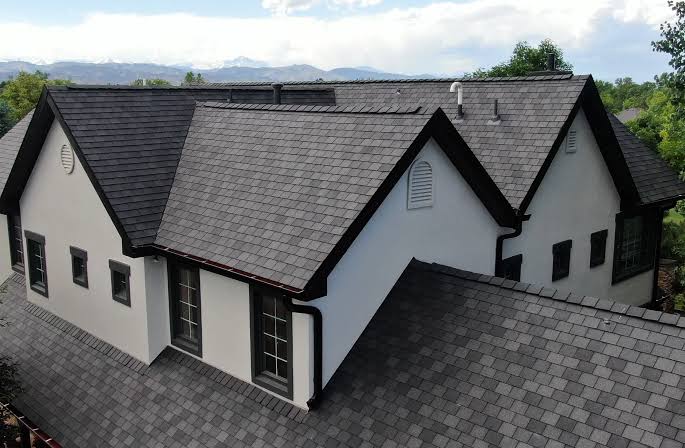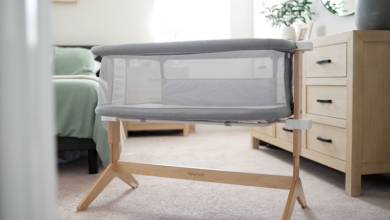Comparing Roofing Materials: Which is Best for Your Home?

Choosing the right roofing material for your home is a critical decision that affects not only the aesthetic appeal but also the durability, energy efficiency, and overall value of your property. With various roofing materials available, each with its advantages and drawbacks, homeowners must consider several factors to make an informed choice. Our Huntsville office can provide professional advice and support if you seek guidance on your roofing project. We will compare different roofing materials, examining their features, benefits, and potential downsides to help you determine the most suitable option for your home.
Common Types of Roofing Materials
Asphalt Shingles
Asphalt shingles are among the most popular roofing materials in the United States due to their affordability, ease of installation, and variety of styles and colors. These shingles are made from a fiberglass or organic base coated with asphalt and mineral granules. One of the key advantages of asphalt shingles is their cost-effectiveness; they offer a good balance between price and performance. Additionally, they are relatively easy to install, which can reduce labor costs. However, asphalt shingles have a shorter lifespan than other roofing materials, typically lasting between 20 to 30 years. They may also be less resistant to extreme weather conditions such as high winds and hail.
Metal Roofing
Metal roofing has gained popularity recently due to its durability, longevity, and energy efficiency. Available in various materials such as steel, aluminum, and copper, metal roofs can last 40 to 70 years, making them a long-term investment. Metal roofs are also highly resistant to weather elements, including wind, rain, and snow, and they are less prone to damage from fire. Additionally, metal roofing reflects solar heat, which can reduce cooling costs during the summer months. On the downside, metal roofing can be more expensive to install than asphalt shingles, and it may require additional insulation to minimize noise from rain and hail.
Clay and Concrete Tiles
Clay and concrete tiles are known for their durability and distinctive appearance. These tiles can last over 50 years and are highly resistant to fire and insect damage. Clay tiles, particularly, are popular in Mediterranean and Spanish-style homes due to their aesthetic appeal. Concrete tiles offer similar benefits and can be molded to resemble other materials, such as wood or slate. Both clay and concrete tiles provide excellent thermal insulation, helping to regulate indoor temperatures. However, these tiles are heavy and may require additional structural support, which can increase installation costs. They are also more expensive than asphalt shingles and may be prone to cracking under heavy impact.
Wood Shingles and Shakes
Wood shingles and shakes offer a natural and rustic look that enhances the curb appeal of many homes. Made from cedar, redwood, or pine, these roofing materials can last 20 to 40 years with proper maintenance. Wood shingles are machine-cut, providing a uniform appearance, while wood shakes are hand-split, giving them a more textured look. One of the main advantages of wood roofing is its environmental friendliness, as it is made from renewable resources. However, wood shingles and shakes require regular maintenance to prevent mold, rot, and insect infestation. They are also less fire-resistant unless treated with a fire retardant, and their installation and maintenance can be more costly than other materials.
Slate Roofing
Slate roofing is renowned for its elegance, durability, and longevity. Slate can last over 100 years with minimal maintenance as a natural stone material. It is highly resistant to fire, water, and temperature fluctuations, making it an ideal choice for various climates. Slate roofs also add a distinctive and sophisticated look to any home. Despite these benefits, slate is one of the most expensive roofing materials. It is also heavy, requiring reinforced structural support, which adds to the overall cost. Additionally, finding skilled contractors experienced in slate installation can be challenging, and repairs can be complex and costly.
Synthetic Roofing Materials
Synthetic roofing materials, such as synthetic slate and rubber shingles, are designed to mimic the appearance of natural materials while offering enhanced durability and lower costs. These materials are often made from recycled plastics, rubber, or composite materials, making them an environmentally friendly option. Synthetic roofing is lightweight, easy to install, and resistant to weather damage and impact. One of the main advantages is that they provide the look of high-end materials like slate or wood at a fraction of the cost. However, synthetic materials may have a different lifespan than their natural counterparts, and their long-term performance can vary depending on the quality of the product.
Conclusion



